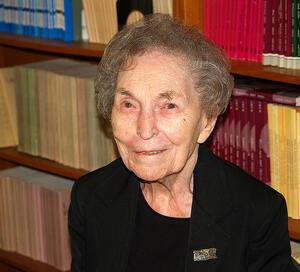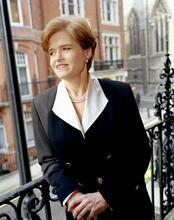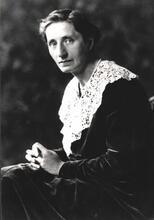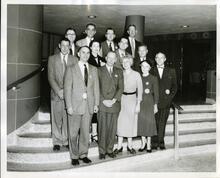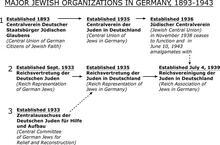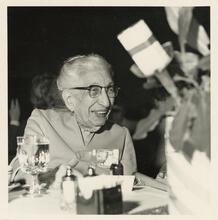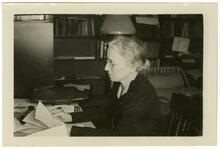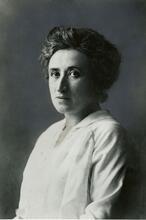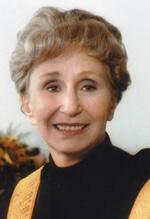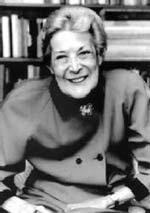Anna Jacobson Schwartz
Anna Jacobson Schwartz was credited as one of the world’s greatest monetary scholars for her work at the National Bureau of Economic Research and her incisive scholarship on economic history. She taught at various colleges, including New York University, Hunter College, and Brooklyn College, and focused much of her energy on research, publishing many books and articles on international money trends. Schwartz served as president of the Western Economic Association from 1987 to 1988, and she was honored as a distinguished fellow of the American Economic Association in 1993. The American Enterprise Institute and the Journal of Financial Services Research held a conference in her honor in 2000. Schwartz also served as the president of the International Atlantic Economic Society between 2002 and 2003 and pursued research in the foreign exchange market.
Anna Jacobson Schwartz was “a leading authority on economic history, monetary economics, international monetary systems, and monetary statistics,” according to the citation honoring her as a Distinguished Fellow of the American Economic Association (AEA) in 1993. Her voluminous publications in these areas spanned a period of more than fifty years.
Family and Education
Anna Jacobson Schwartz was born on November 11, 1915, in New York City to Pauline (Shainmark) Jacobson and Hillel Jacobson, both of whom had immigrated to the United States from Eastern Europe during the first decade of the century. Hillel Jacobson was a manager and responsible for rabbinical supervision of the Term used for ritually untainted food according to the laws of Kashrut (Jewish dietary laws).kosher meat department of Swift and Co. Anna was the third of five children, including an older sister and brother and two younger brothers.
At Camp Achvah, a Hebrew camp associated with a Hebrew afternoon high school, which she attended from 1930 to 1936, she met Isaac Schwartz, whom she married in 1936. Isaac Schwartz was, until his retirement, controller for an importing firm. The Schwartzes had four children—Jonathan, Paula, Naomi, and Joel.
Schwartz graduated from Barnard College and began graduate study at the Graduate Faculties of Columbia University, from which she received her MA in 1935 and her PhD in 1964.
Career
Schwartz worked briefly at the U.S. Department of Agriculture in 1936 and then at the Columbia University Social Science Research Council, from 1936 to 1941. She then joined the National Bureau of Economic Research, where she did most of her research and writing and where she long remained a research associate. She had a number of part-time academic associations, including Baruch, Brooklyn, and Hunter College of the City University of New York and New York University, and beginning in 1986 was adjunct professor of economics at the Graduate School and University Center of the City University of New York. One unusual interlude in her career occurred in 1981–1982, when she was staff director of the U.S. Gold Commission, a group of mostly political appointees charged with making recommendations on the future role of gold in the American monetary system.
Schwartz initially made her reputation in the field of quantitative economic history. That was the subject of her first journal article, in 1940; of a two-volume work coauthored with Arthur D. Gayer and Walt W. Rostow, published in 1953; and many papers since then. She was most widely known for three monumental books on American and British monetary history, coauthored with Milton Friedman. These books were described in the AEA citation as “the major force in reorienting the profession’s thinking … about the importance of the stock of money in cyclical fluctuations,” to the point where she was described by a critic as “the high priestess of monetarism.” A book consisting of appraisals of her work, edited by Michael D. Bordo, was published in 1989.
Awards and Later Life
Schwartz received many honors during her career. She was elected to Phi Beta Kappa in 1934 and received the Murray Fellowship awarded by Barnard College in 1934–1935. She was elected president of the Western Economic Association in 1987–1988 and received honorary degrees from the University of Florida (1987), Stonehill College (1989), Iona College (1992), Rutgers University (1998), Emory University (2000), and the City University of New York (2000). The American Enterprise Institute and the Journal of Financial Services Research held a conference in her honor in April 2000. From 2002 to 2003, she served as president of the International Atlantic Economic Society. In 2007, Schwartz was elected a Fellow of the American Academy of Arts and Sciences before turning her focus to research on the 2008 financial crisis. She openly criticized bailouts and published an op-ed in the New York Times condemning Ben Bernanke and the Federal Reserve.
Throughout her career, Anna Schwartz’s work was distinguished by meticulous attention to detail and unsurpassed knowledge of data and sources of information on monetary and financial matters. She was always helpful to scholars needing help with such questions and exceptionally generous in reading manuscripts sent to her for advice and criticism.
Anna Jacobson Schwartz died on June 21, 2012, in New York.
American Economic Review 84, no. 4 (September 1994).
Bordo, Michael D., ed. Money, History, and International Finance: Essays in Honor of Anna J. Schwartz (1989).
Crittendon, Ann. “Baptism of Fire at Gold Panel.” NYTimes, January 20, 1982.
Hershey, Jr., Robert D. “Anna Schwartz, Economist Who Collaborated With Friedman, Dies at 96.” NYTimes, June 21, 2012.
Schwartz, Anna. Conversations with author, and Curriculum Vitae. National Bureau of Economic Research, Cambridge, Mass.
Schwartz, Anna. “Man Without a Plan.” NYTimes, July 25, 2009.
Tavlas, George S. "Anna Jacobson Schwartz: In Memoriam." Cato J. 33 (2013): 321.

